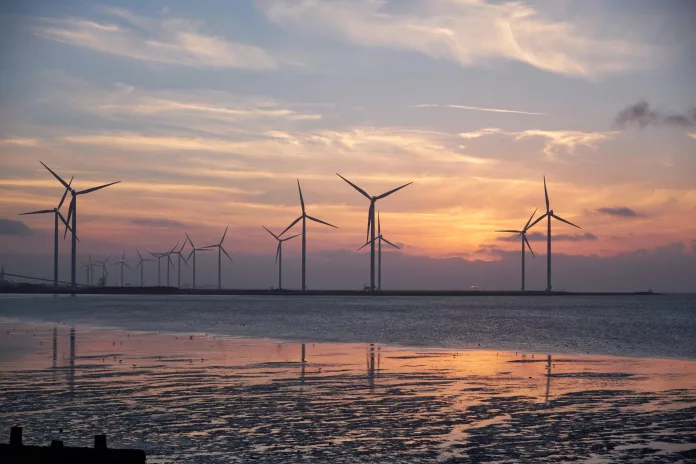The US offshore wind sector has witnessed a remarkable turnaround from the setbacks of the prior year, with projections indicating an influx of 15.5 gigawatts in new energy capacity. This growth trajectory signifies a robust recovery, with numerous wind energy projects in the pipeline signalling green energy’s renewed momentum.
A Closer Look at New Jersey’s Wind Energy Setbacks
In analyzing the challenges that the offshore wind industry faced last year, New Jersey stands as a prime example. The coastal state, which has yet to see its first turbine, became a battleground with local opposition fueled by misinformation blaming turbines for whale deaths. Experts have dismissed these claims, instead pinpointing vessel collisions and entanglement with fishing gear as the culprits behind the unfortunate incidents starting back in 2017.
Despite the vocal resistance, offshore wind setbacks were not as much about public opinion as they were about practical issues. For instance, the wind energy giant Ørsted pinpointed supply chain disruptions, including a shortage of specialized work boats, as the reason for its wind farm cancellations in New Jersey, contradicting the narrative of successful opposition campaigns.
The Comeback of Offshore Wind in the US
While the previous year presented obstacles, including disappointing results from wind lease auctions in the Gulf of Mexico, the offshore wind sector is now surging forward. The start of 2024 saw New Jersey’s approval of two significant wind projects, while BOEM remains committed to developing new lease areas in the Gulf region.
Key industry watcher Oceantic Network predicts a wave of state approvals potentially culminating in 15.5 gigawatts of new offshore wind capacity. This includes not only contracts replacing losses but additional capacity that serves as “icing on the green cake.”
Furthermore, established projects like Dominion‘s Coastal Virginia Offshore Wind initiative are advancing with strong investment backing, showcasing the allure of the US market to global financial heavyweights.
Emergence of Floating Wind Turbine Technology
Innovation is driving growth in offshore wind, particularly through the advancement of floating turbines. Suited for deeper waters off Maine and the West Coast, these turbines unlock prospects for regions previously deemed unsuitable for conventional wind farms. BOEM aims high, targeting 15 gigawatts from floating wind technology by 2035.
California and Oregon have emerged as leaders in this space, with newly auctioned lease areas promising substantial capacity. On the East Coast, Maine stands to be a significant contributor, with a vast leasing area that could potentially offer more than 40 gigawatts of wind energy.
Ørsted’s Continued Commitment to the US Market
Despite earlier project pullbacks, Ørsted remains invested in the US, particularly with New York’s wind energy efforts, illustrating its long-term view on the market’s potential. Recent contractual provisions safeguarding against inflation are changing the way wind energy deals are structured, which could indeed influence future project costs.
Wind energy innovation continues with designs aimed at reducing construction costs and increasing efficiency. Techniques to minimize wind turbulence are part of the sector’s ongoing advancements, promising greater cost-effectiveness in the future.
With the spotlight back on the US offshore wind industry, the future seems filled with sustainable, green possibilities, buoyed by a combination of policy support, technological advancements, and strategic investments.

























